24 Common Backyard Birds in Utah (With Pictures)
Last Updated on
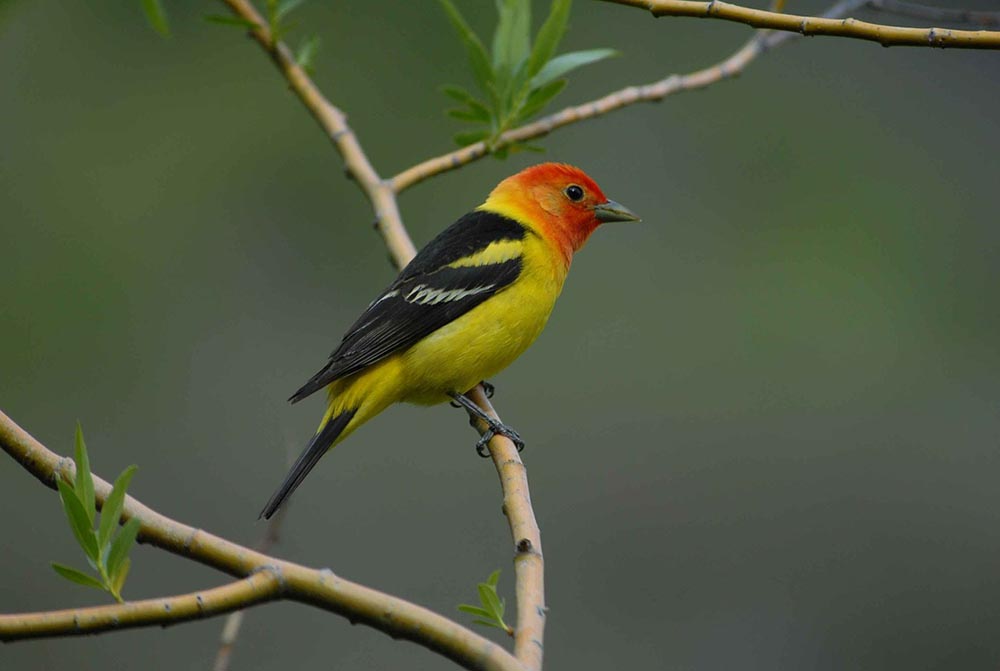
If you love bird watching and live in Utah, you will probably want to familiarize yourself with some of the most common backyard birds in the state. While experienced birdwatchers might know most of these species already, casual birdwatchers or those who just love wildlife will love learning about the colorful creatures they share the state with.
This list goes over some of the most common backyard birds in Utah and includes information on how to identify them. So, get out your binoculars or set up your bird feeders, and you could be lucky enough to see all of these species some day.

The 24 Most Common Backyard Birds in Utah
1. House Finch (Haemorhous mexicanus)
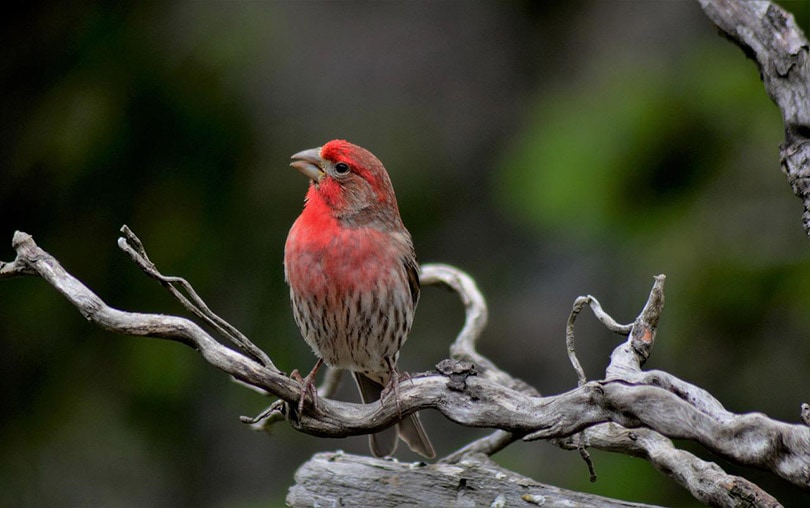
| Length: | 6 inches |
| Body Shape: | Small body and long, flat head |
| Bill Type: | Large, cone-shaped beak |
House finches are common throughout the United States, and they are often found in residential areas. They often visit backyards throughout the state.
House finches are one of the most common backyard birds in the United States. Their coloring is mostly brown and gray, but the males have some red coloration on their chests and heads. There are other red finches, but these are most likely to be found in residential areas.
House finches often flock together on trees or even wires, and if you live in a rural area, you’re especially likely to see them In your area.
2. European Starling (Sturnus vulgaris)
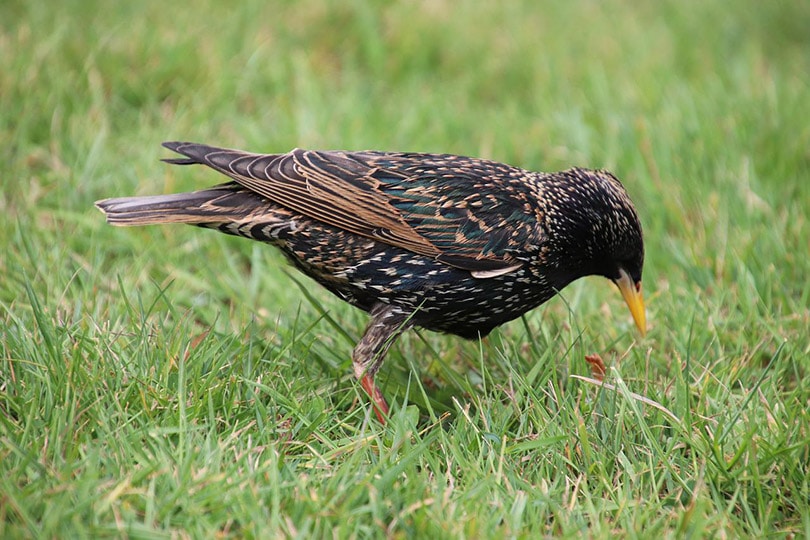
| Length: | 8.5 inches |
| Body Shape: | Plump body and round head |
| Bill Type: | Long, sharp beak |
European starlings first came to North America on ships during the 1800s, and they’ve become somewhat problematic since. They are considered an invasive species because they displace native birds in the area. Like house finches, they live in Utah year-round.
Europen Starlings have gray-brown plummage, but in the spring, their feathers have white markings. These birds are a staple in urban and suburban areas.
3. Black-billed Magpie (Pica hudsonia)

| Length: | 18–24 inches |
| Body Shape: | Large body with a thick neck and long tail |
| Bill Type: | Long beak |
Most people have heard of magpies, and the black-billed type is one of the most common varieties found in Utah. Black-billed magpies live throughout the state all year. They are often mistaken for crows because they are mostly black and have long tails, although magpie tails are even longer.
Unsurprisingly, they have blackish heads and bodies with some bluish iridescence. They primarily live in ranchland areas.
4. American Robin (Turdus migratorius)
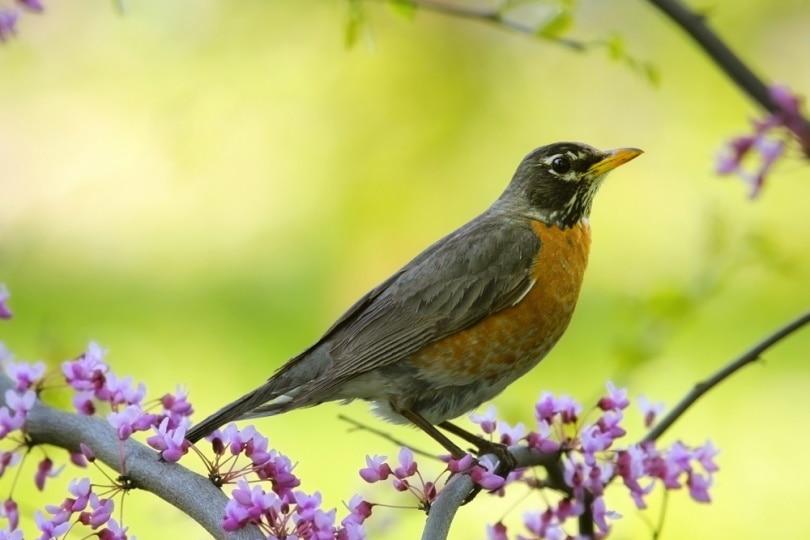
| Length: | 10 inches |
| Body Shape: | Round, plump body and round head |
| Bill Type: | Slender beak |
Most people in the United States know about robins, and they are just as common in Utah as they are in the rest of the country. They live in Utah year-round and have greyish feathers with a reddish or rusty orange chest.
Many people enjoy watching robins because they move their heads in an animated way as they look for food. They are known for eating worms in backyards and have a familiar call that is adored by birdwatchers..
5. Dark-eyed Junco (Junco hyemalis)

| Length: | 6 inches |
| Body Shape: | Round body and square-shaped tail |
| Bill Type: | Short, cone-shaped beak |
You might know this species by the name “snowbirds” because they visit residential areas during the wintertime. During the other months of the year, they live in pine forests. Many bird watchers enjoy watching them hop around and search for food.
The dark-eyed junco has dark gray plumage with a white belly if it is the eastern variety, but the western birds have black-colored heads and pink sides. The females are generally lighter in color than the males.
6. Mourning Dove (Zenaida macroura)
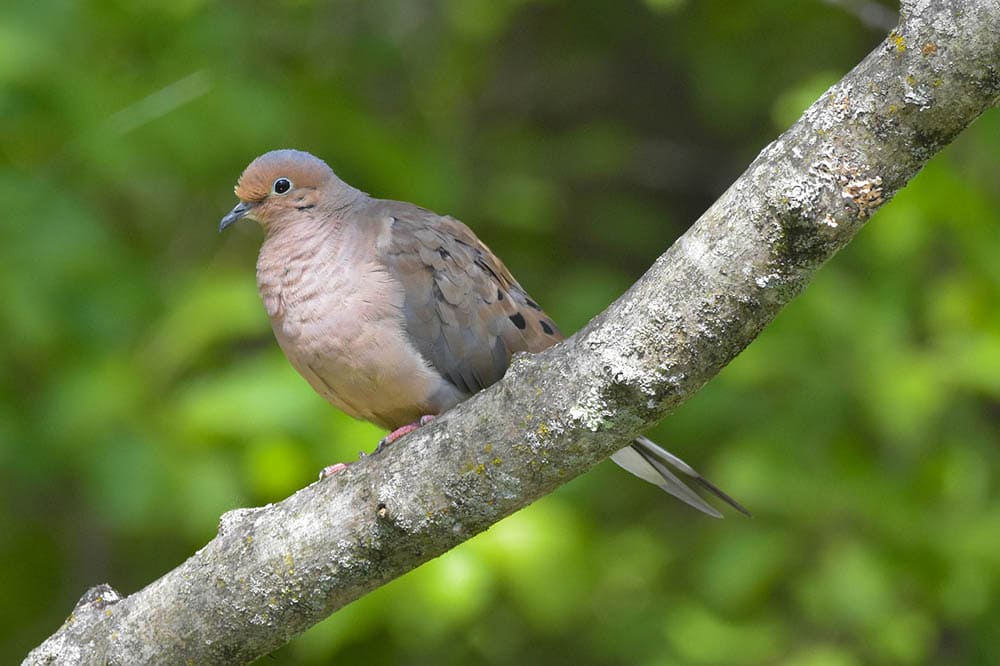
| Length: | 12 inches |
| Body Shape: | Plump body and round head |
| Bill Type: | Small, slender beak |
If you live in Utah or anywhere else in the mainland United States, you’ve probably encountered mourning doves at one time or another. They are prevalent in North America and have pale brownish-pink bodies and white on the side of their tails. They can be found in many habitats, including rural and urban areas.
The mourning dove makes a cooing sound that is easily distinguishable from other bird calls. If you want to hear doves singing their songs, you can attract them with seeds on the ground.
7. House Sparrow (Passer domesticus)
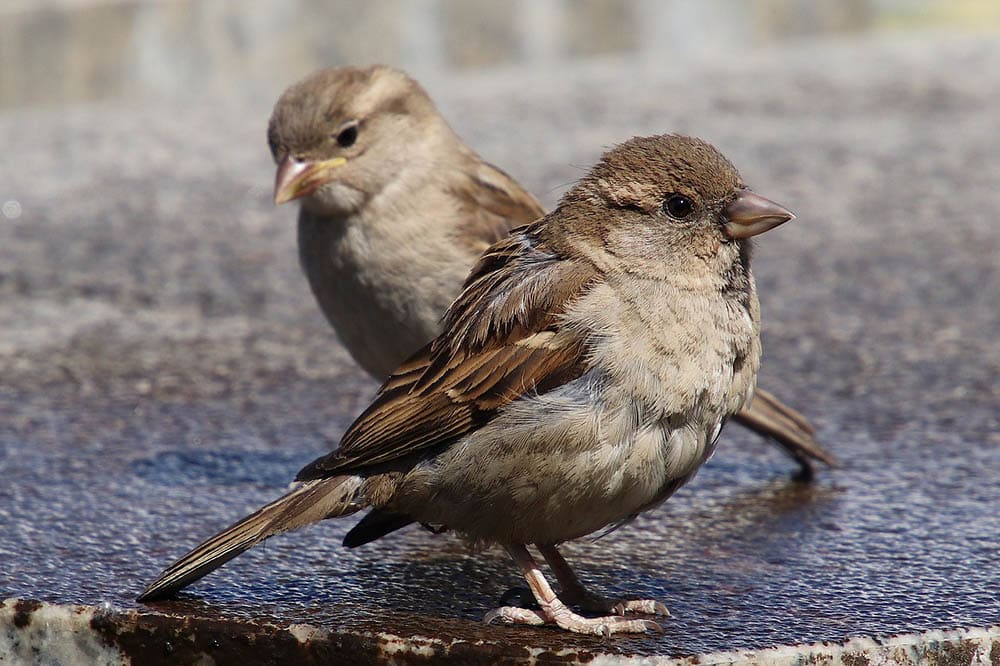
| Length: | 5.5–7.7 inches |
| Body Shape: | Broad-chested body and short legs |
| Bill Type: | Short, cone-shaped beak |
Sparrows are considered an invasive species, and they were brought to North America from Europe in the 1800s. They are similar to starlings and sometimes displace native birds. The male house sparrow is primarily brown and gray, while the females are tan and brown but don’t have the black mask markings like the males.
These birds travel in flocks and tend to make a lot of noise as they chirp. Unfortunately, they tend to keep other birds away from feeders and are somewhat aggressive.
8. Red-winged Blackbird (Agelaius phoeniceus)
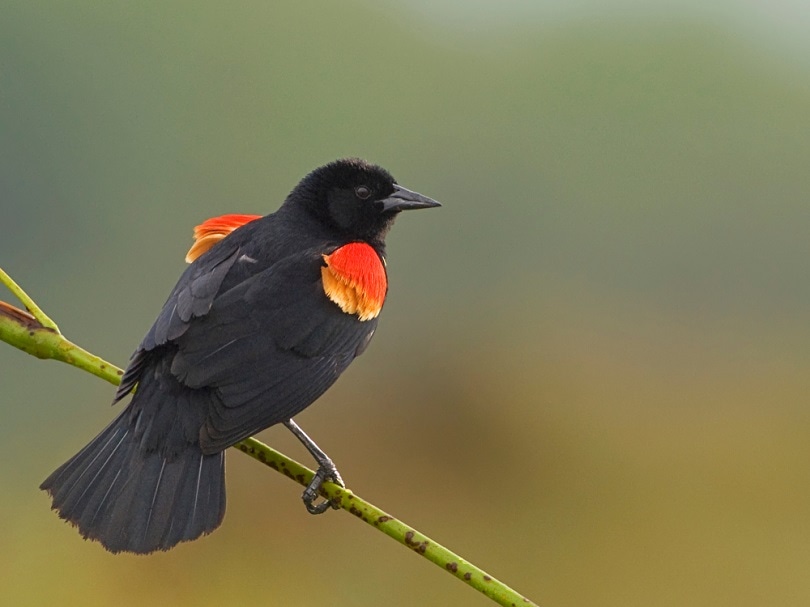
| Length: | 8 inches |
| Body Shape: | Round body and flat forehead |
| Bill Type: | Long, sharp beak |
Red-winged blackbirds are another noisy species that travel in flocks. They live most of the year in marshy areas but will spend time in residential yards during the winter.
While they are a more neutral-colored bird, the bright markings on the males are interesting to view. They are primarily black, but the males have a red or yellow area on the shoulders. Females, on the other hand, have brown or rust plumage.
9. Northern Flicker (Colaptes auratus)
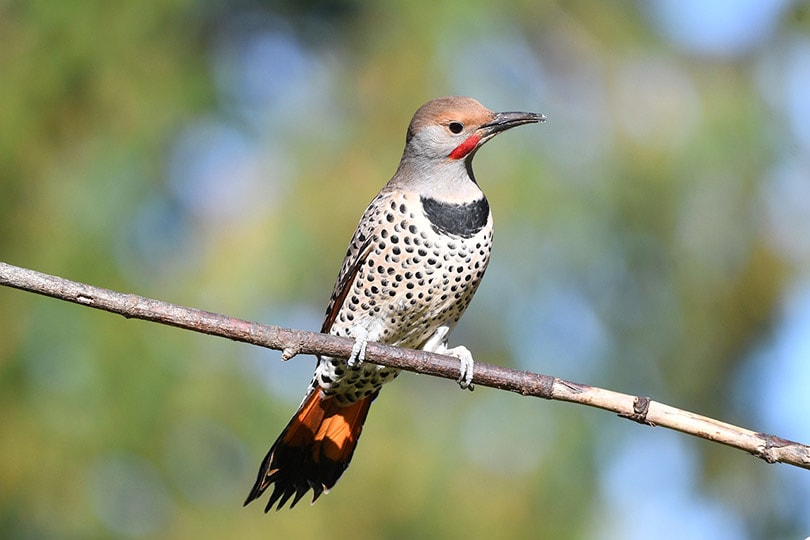
| Length: | 13 inches |
| Body Shape: | Stocky body and large head |
| Bill Type: | Long, curved beak |
The northern flicker is a woodpecker that eats ants, and it’s mostly found on the groundinstead of trees like other woodpeckers. The northern flickers’ bodies are brown with black and white flecked markings, and their heads are gray with reddish markings around the beak.
They live on the edges of forests but also visit backyards. In the spring, the males pound on tree branches to attract mates.
10. Song Sparrow (Melospiza melodia)
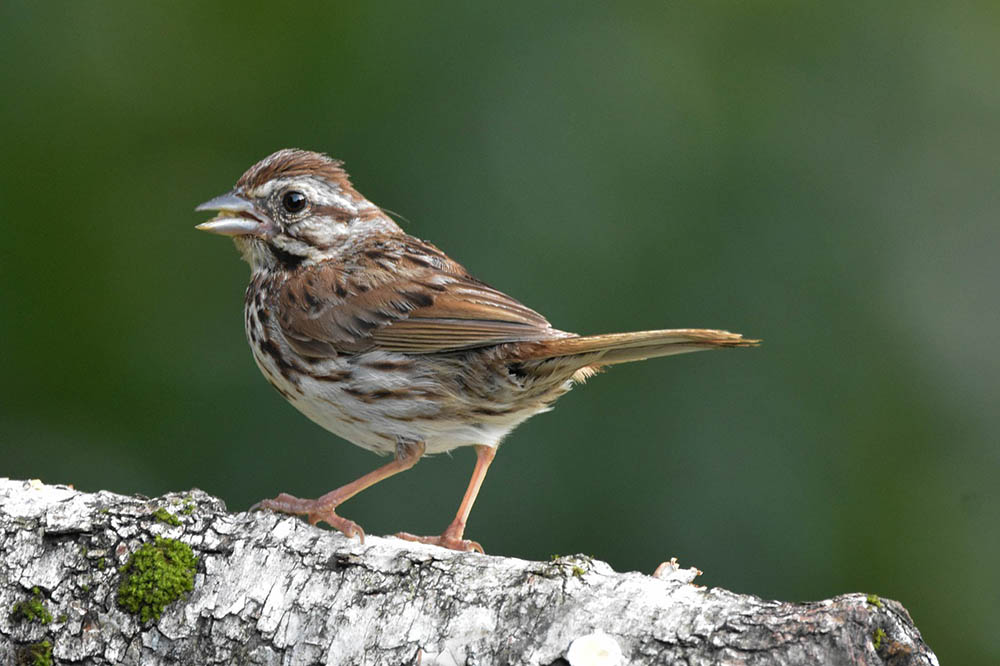
| Length: | 4.5–6.5 inches |
| Body Shape: | Stout body and round head |
| Bill Type: | Short, conical beak |
Song sparrows live year-round in most of the state except for the southeast areas. They are small in size and have a range of colors from light gray to dark and rusty. They are usually grayish-brown.
House sparrows are common in Utah and like to live around thickets near water sources, so if you find them in your backyard, it’s likely because they are attracted to the shrubbery around the property.
11. Black-capped Chickadee (Poecile atricapillus)

| Length: | 5 inches |
| Body Shape: | Round body and large head |
| Bill Type: | Short, straight beak |
The black-capped chickadee is a cute bird given its small size, but its coloration is primarily neutral.Black-capped chickadees have black heads, hence their name, and the rest of their bodies are greyish. They also have white feathers around their faces.
Chickadees are common backyard birds in Utah and other states in the northern United States. If you see them around your yard, they are usually in small flocks and can even travel with other species such as woodpeckers and kinglets.
12. Eurasian-collared Dove (Streptopelia decaocto)

| Length: | 12–14 inches |
| Body Shape: | Stout body and round head |
| Bill Type: | Small, short beak |
Eurasian-collared doves are a kind of pigeon, and they’ve been in the United States since the mid-1980s. They were first imported in Florida and have spread throughout most of the United States. They are similar in size to the more common domestic pigeon but are cream-colored with a small black “collar” around their necks.
You’re most likely to see Eurasian-collared doves around residential areas in trees or on electrical wires. They live in Utah year-round and often roost together in pairs.
13. White-crowned Sparrow (Zonotrichia leucophrys)

| Length: | 7 inches |
| Body Shape: | Long, round body and round head |
| Bill Type: | Short, conical beak |
While most people think about birdwatching in the summer, several birds are found in Utah backyards in the winter, and the white-crowned sparrow is one of them. The bird also lives year-round in the northern and central parts of the state.
White-crowned sparrows live mostly in shrublands and like to eat various things such as seeds, insects, and grains. Their coloring is primarily brown with a black and white striped head.
14. Lesser Goldfinch (Spinus psaltria)

| Length: | 3.5–4.7 inches |
| Body Shape: | Stout body and large head |
| Bill Type: | Small, short beak |
The lesser goldfinch is one of the brightest colored birds on this list. It lives in Utah during the summertime and and has black wings and white marks. The males have a bright yellow chest that they maintain throughout the year.
Lesser goldfinches live around woodlands, fields, and grasslands, and they may even flock together with hundreds of their species in open fields. Birdwatchers admire these birds because of their bright yellow color.
15. Barn Swallow (Hirundo rustica)
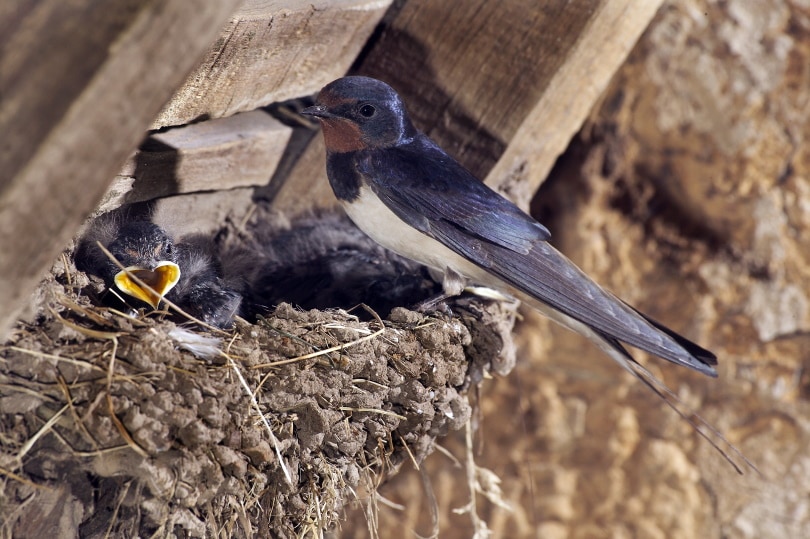
| Length: | 6–8 inches |
| Body Shape: | Stocky body and long tail |
| Bill Type: | Short, wide beak |
Like other swallow species, the barn swallow is relatively widespread in many parts of the world, and its breeding season takes place in the northern hemisphere. So, you will see them in Utah during the summer months.
They look similar to house finches but have longer tails, and their coloration is purple-blue on the top half of their bodies and pink to orange on the lower half.
The barn swallow is tiny and has attractive feather colors, and you’ll want to look out for them as they often perch on fences and wait to hunt flying insects.
16. Western Meadowlark (Sturnella neglecta)
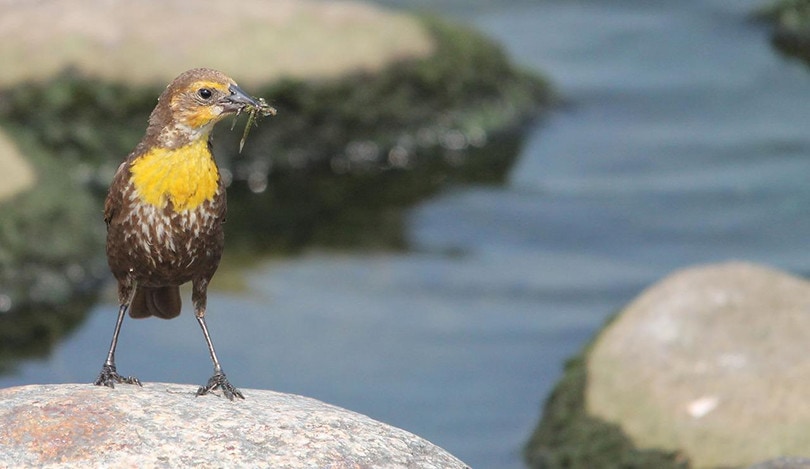
| Length: | 8.5 inches |
| Body Shape: | Stocky body and short tail |
| Bill Type: | Long, sharp beak |
The western meadowlark is a beautiful bird with a large repertoire of vocalizations. It has light brown plumage, a yellow belly, and a black, necklace-like ring around its neck.
If you live in central or southern parts of Utah, you can find these birds throughout the year, but they only live in colder areas during the summer. Western meadowlarks live near fields and don’t come near feeders as they eat insects and grains.
17. Spotted Towhee (Pipilo maculatus)

| Length: | 6.7 inches |
| Body Shape: | Plump body and large head |
| Bill Type: | Short, cone-shaped beak |
If you spend a lot of time in your yard, you might see the spotted towhee looking under leaf litter for food. You can attract towhees to your home with ground feeders. They live throughout Utah year-round, except in the northeastern areas where they are just summer visitors.
Their coloring is primarily black, with white spots on their wings and back. The males have rusty orange sides, while the females are paler in color.
18. American Goldfinch (Spinus tristis)
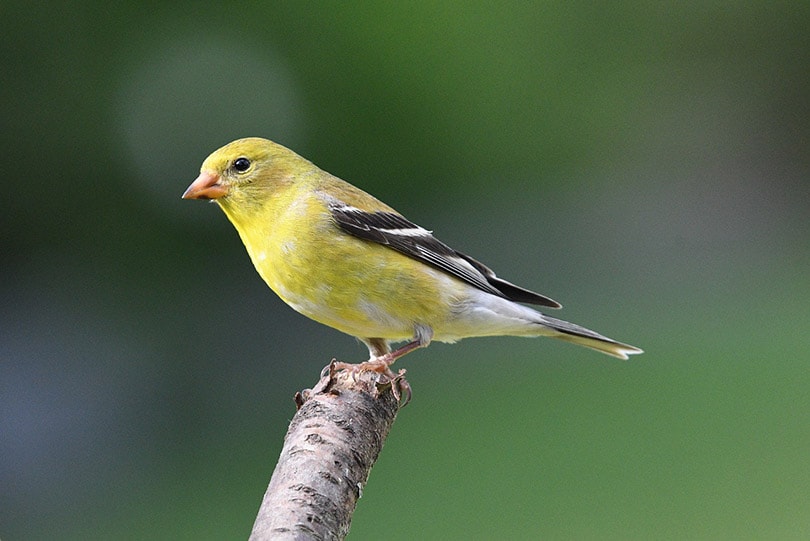
| Length: | 5 inches |
| Body Shape: | Stout body and short tail |
| Bill Type: | Short, pink beak |
American goldfinches are beautiful birds with bright yellow feathers on most of their bodies and white and black markings on their wings. They are sometimes known as “wild canaries” because of this. You can find these bright birds in most of Utah throughout the year, but they only visit the southern area in the winter.
This species is also fascinating to watch fly; they move their wings in short, fast bursts.
19. Yellow-rumped Warbler ( Setophaga coronata)
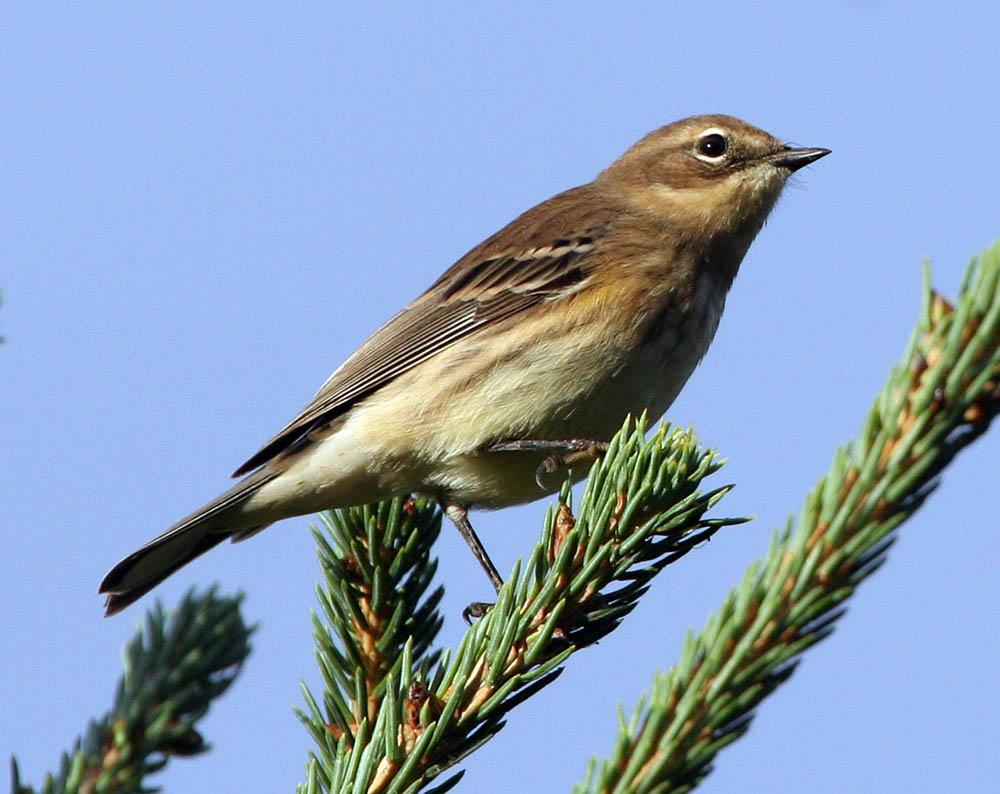
| Length: | 4.5–6.6 inches |
| Body Shape: | Plump body and short tail |
| Bill Type: | Slender, straight bill |
The yellow-rumped warbler visits Utah during the summertime, but residents in the southwestern area of the state can find warblers year-round. They are blue-gray in the spring with black chests and yellow markings on their sides. The bright splash of yellow underneath the grayish plumage is one of their most prominent features, and their warbling sound is unique and unforgettable.
Warblers primarily live in coniferous forests in the western states, but some also live along coastlines.
20. Western Kingbird (Tyrannus verticalis)
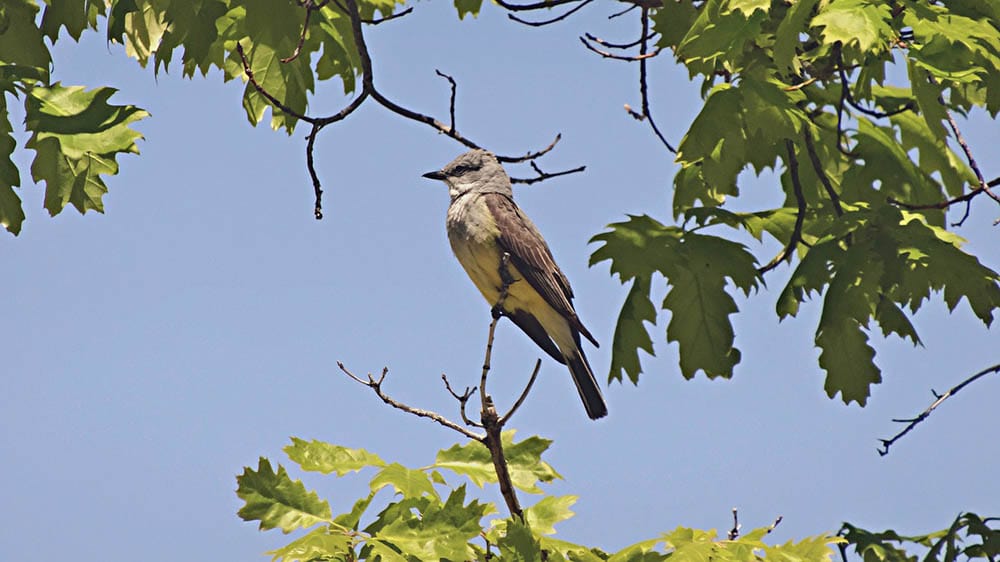
| Length: | 8.5–9.5 inches |
| Body Shape: | Long body and large head |
| Bill Type: | Long, wide beak |
Western kingbirds are often aggressive with other birds and will chase them away, but this is often a defense mechanism to protect against hawks and crows. They live in Utah during the summerbut migrate south when the temperature drops.
The western kingbird is primarily gray with brown wings and a yellow belly. If you want to spot them in your yard, look for them around fences and small shrubs during the summer. They often chase down flying insects before going back to perch. Because they eat insects, you won’t find them at your backyard bird feeders.
21. Black-headed Grosbeak (Pheucticus melanocephalus)

| Length: | 6–8 inches |
| Body Shape: | Stout body and large head |
| Bill Type: | Heavy, stout beak |
You can see black-headed grosbeaks in Utah during the summer, and you can identify the males by their black plumage with orange stripes on their backs and wings. Females, on the other hand, have more orange and yellow plumage.
The males are also known for singing a song that sounds similar to a robin, and these birds will often rest in the shades or large trees. You can attract them to your yard by including sunflower seeds and berries in feeders.
22. Woodhouse’s Scrub-Jay (Aphelocoma woodhouseii)

| Length: | 11–12 inches |
| Body Shape: | Lanky, large bodies and long legs |
| Bill Type: | Straight, stout beak |
The Woodhouse’s scrub-jays have habitats in the Mountain West, so you can see them throughout the year in Utah. They are blue-gray and have black bills and masks. Their coloring is lovely to witness, but they’re difficult to spot because they tend to be shy.
However, scrub jays are vocal birds that you’ll probably hear in your yard before seeing them. They live near juniper trees and sometimes make their way into residential places. Because they are omnivorous, you can attract them with sunflower seeds and peanuts.
23. Black-chinned Hummingbird (Archilochus alexandri)
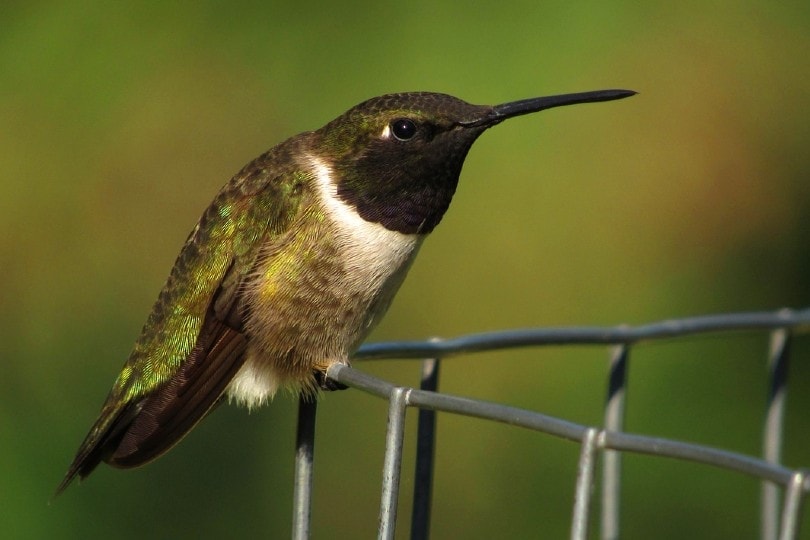
| Length: | 3.25 inches |
| Body Shape: | Round body |
| Bill Type: | Long, downturned beak |
Hummingbirds are always exciting to find in your backyard as they move so quickly. The black-chinned hummingbird is black, at least for the males, but the light will reflect gemstone-like colors in their plumage.
These are beautiful birds, and they visit Utah during the summer. They live in drier areas and canyons, but they also visit backyard hummingbird feeders. You can attract them to your property with a mixture of fresh water and granulated sugar.Although you may have seen feeders with red liquid, there is no need to add dye to the sugar water.
24. Western Tanager (Piranga ludoviciana)

| Length: | 6.5–7.5 inches |
| Body Shape: | Slim body |
| Bill Type: | Short, thick beak |
Western tanagers are stunning to observe because their heads are orangish-red and their bodies are yellow. The males have brighter feathers than the females,with fiery red-colored heads and bright yellow bellies. They’ll be found in coniferous forests in Utah, but they prefer to stay up higher in the canopy. They live in the state during the summertime.
If you want to attract these beautiful birds to your yard, you can set out dried fruit on platform feeders.

Final Thoughts
The backyard birds on this list are a great jump-off point for birdwatchers. Although you can enjoy the species that visit your backyard, you can also spot birds of prey and waterfowl in other areas of the state. From its arid deserts to the Rocky Mountains, Utah has a diverse landscape that welcomes several avian species.
See also:
Featured Image Credit: PublicDomainImages, Pixabay
Table of Contents
- The 24 Most Common Backyard Birds in Utah
- 1. House Finch (Haemorhous mexicanus)
- 2. European Starling (Sturnus vulgaris)
- 3. Black-billed Magpie (Pica hudsonia)
- 4. American Robin (Turdus migratorius)
- 5. Dark-eyed Junco (Junco hyemalis)
- 6. Mourning Dove (Zenaida macroura)
- 7. House Sparrow (Passer domesticus)
- 8. Red-winged Blackbird (Agelaius phoeniceus)
- 9. Northern Flicker (Colaptes auratus)
- 10. Song Sparrow (Melospiza melodia)
- 11. Black-capped Chickadee (Poecile atricapillus)
- 12. Eurasian-collared Dove (Streptopelia decaocto)
- 13. White-crowned Sparrow (Zonotrichia leucophrys)
- 14. Lesser Goldfinch (Spinus psaltria)
- 15. Barn Swallow (Hirundo rustica)
- 16. Western Meadowlark (Sturnella neglecta)
- 17. Spotted Towhee (Pipilo maculatus)
- 18. American Goldfinch (Spinus tristis)
- 19. Yellow-rumped Warbler ( Setophaga coronata)
- 20. Western Kingbird (Tyrannus verticalis)
- 21. Black-headed Grosbeak (Pheucticus melanocephalus)
- 22. Woodhouse’s Scrub-Jay (Aphelocoma woodhouseii)
- 23. Black-chinned Hummingbird (Archilochus alexandri)
- 24. Western Tanager (Piranga ludoviciana)
- Final Thoughts
About the Author Robert Sparks
Robert’s obsession with all things optical started early in life, when his optician father would bring home prototypes for Robert to play with. Nowadays, Robert is dedicated to helping others find the right optics for their needs. His hobbies include astronomy, astrophysics, and model building. Originally from Newark, NJ, he resides in Santa Fe, New Mexico, where the nighttime skies are filled with glittering stars.
Related Articles:
Monocular vs Telescope: Differences Explained (With Pictures)
10 Types of Hummingbirds in Arkansas (With Pictures)
8 Types of Hummingbirds in Nebraska (With Pictures)
5 Types of Hummingbirds in Idaho (With Pictures)
3 Types of Hummingbirds in Mississippi (With Pictures)
8 Types of Hummingbirds in Kansas (With Pictures)
5 Types of Hummingbirds in West Virginia (With Pictures)
5 Types of Hummingbirds in Ohio (With Pictures)
